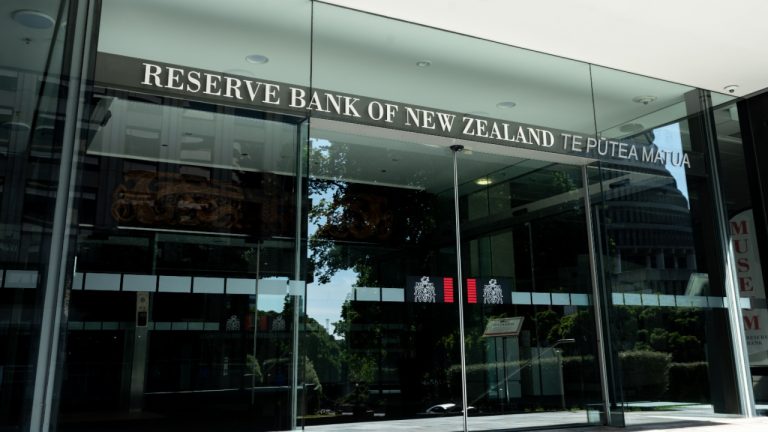Subsidy offer may pull baseball’s Oakland A’s to Las Vegas
7 min read
Nevada lawmakers are weighing a $380 million public financing package to help pay for a stadium if the Oakland Athletics Major League Baseball team relocates to Las Vegas.
If the deal moves forward, the state will have wooed away the California city’s professional baseball team and its professional football team, the Raiders, a National Football League team that played its first game in Allegiant Stadium in January 2020.
Gov. Joe Lombardo, Clark County officials and the A’s ownership announced last week they had reached a tentative agreement on a financial package for a stadium estimated to cost $1.5 billion, but provided few details.
“The agreement follows months of negotiations between the state, the county and the A’s and I believe it gives us a tremendous opportunity to continue building on the professional sports infrastructure of southern Nevada,” Lombardo said in a statement. “Las Vegas is clearly a sports town, and Major League Baseball should be part of it.”
The state’s Senate Committee on Finance and Assembly Committee on Ways and Means held a joint public hearing on Monday that stretched to eight hours on Senate Bill 509, the measure brought by Lombardo containing the details about the proposal.
Jeremy Aguero, principal with Las Vegas economic, fiscal and policy research firm Applied Analysis, State Treasurer Zach Conine, and Steve Hill, chief executive officer/president of the Las Vegas Convention and Visitors Authority and chair of the Las Vegas Stadium Authority, gave a joint presentation on the bill that took nearly two hours.
The stadium authority, which oversaw the $2 billion construction of the Raiders 62,500-seat Allegiant Stadium, would also be in charge of the A’s stadium.
The hoped-for timeline, according to the bill, is that the Legislature would approve the bill this month, MLB would approve the plan next month, and site construction could begin in 2024-25 and the team could play its first game in the new stadium in spring 2028.
Assembly Speaker Yeager, D-Las Vegas, and Sen. Majority Leader Nicole Cannizzaro, D-Las Vegas, said during a May 25 press conference they would not pass any significant bills, including the A’s bill or funding for a film tax credit expansion, until after the governor approves the state budget. Lombardo has said he won’t sign the budget until lawmakers approve his signature policies.
Given that, the timeline provided at the hearing could be optimistic. Adding to the pressure: the regular session is supposed to end by Monday, though special sessions can be called.
The elephant in the room, according to one lawmaker, is why the state is working so hard to attract the last-place A’s to the state. And how they are going to achieve the projected average annual stadium attendance of 2.6 million with a team that is currently drawing attendance averaging less than 9,000 in its current 56,000-seat home at the Oakland-Alameda County Coliseum. The Las Vegas stadium would seat 30,000.
“We are getting a lot of calls about the project,” Yeager said. “It’s no secret the team isn’t good right now. To build the kind of success we have with the Las Vegas Golden Knights, is the team going to invest in putting a winning team on the field?”
The National Hockey League’s Knights are playing in the second Stanley Cup Finals of their five-season history. The A’s on the other hand, “are trending towards being one of the worst teams in baseball history,” according to a recent Sports Illustrated article.
The team came in last place of the MLB’s 30 teams in 2022 and has lost 42 games this season, the most by any team prior to June 1 in MLB history, Sports Illustrated reported.
Team owner John Fisher is best known for maintaining low team salaries, which makes it extremely hard to attract and keep top players needed to win games.
The team also substantially raised ticket prices before the 2022 season even as it lowered the quality of its roster. As recently as 2019, the last season before the pandemic, Oakland attendance averaged more than 20,600 to watch a team that made the playoffs.
Oakland officials say Fisher and the Athletics negotiated in bad faith over long-brewing plans to build a waterfront stadium there.
“It is clear to me that the A’s have no intention of staying in Oakland and have simply been using this process to try to extract a better deal out of Las Vegas,” Mayor Sheng Thao said in a statement after news of the Las Vegas deal broke in April.
As for the investment by the team, Aguero said Yeager would have to ask the team’s owner. Fisher failed to attend the hearing.
When it comes to the projected attendance numbers, Aguero said Las Vegas has a secret ingredient that other cities don’t have. Its status as the tourism capital of the country means that 30% of the attendance at the game is expected to come from out of town visitors, he said.
“The team will have to talk to you about what they are going to do to be competitive,” Aguero said. “The level of attendance we are estimating would put them in the 50th percentile of baseball team attendance. I feel comfortable that we can be at least average with regard to attendance.”
Attendance numbers are not just based on baseball games, but include other events at the stadium.
Assemblywoman Daniele Monroe-Moreno questioned comparisons made to how well the Raiders have done in filling their stadium to the A’s.
“The Raiders had a huge fan base who would travel here,” Monroe-Moreno said. “I don’t see that with the A’s. Their average attendance is 9,000, and they were under 8,000 in 2022. It makes me wonder how you got to the attendance number you did that you are basing income on.”
Aguero agreed that attendance in Oakland is dismal.
“That is why the A’s want to find a new home,” Aguero said, adding that they would bring their existing fan base and create a new one.
“We aren’t expecting that the A’s will be the highest attended baseball team in major league baseball,” he said. “We are estimating they will be at 50% and they are building a facility relative to size.”
Since the A’s are investing $1.2 billion in the stadium, they have a strong incentive to make sure they are fielding a strong team, he said.
“The revenue generated by the attendees at the game will go to pay off the bonds; that is why the coverage ratio we are using is two times what is necessary,” Hill said. “We have built in a safety net to pay off the bonds. If we get attendance of 7,500 a game we are there.”
The presentation, however, indicated expected attendance of 28,000 per game.
If lawmakers approve SB 509, the proposed stadium estimated to have a total cost of $1.5 billion would receive $180 million in transferable tax credits issued by the state and $120 million in bonds issued by Clark County. The overall agreement is that the Athletics would not spend less than $1.1 billion toward the project and Nevada would not provide more than $380 million, and any cost overruns would be borne by the team.
The proposal involves creating a tax increment financing district. All of the revenue from various forms of taxes in the district, including sales tax, modified business taxes and live entertainment taxes would pay the debt service on the bonds. It also asks that $25 million from the general fund be placed in the Nevada State Infrastructure Bank as a backstop for the bonds, so that the bonds would achieve two times coverage, Conine said during the hearing.
The two times coverage ratio includes a state line of credit that, if used, must be repaid from the tax revenues generated by the project. A full year’s worth of reserves would be deposited in a bank account the day the bonds are issued, and an accelerated allocation of funds from the revenue streams would be placed in an account for a second year’s reserve fund.
“As structured, the project would essentially have a four-year reserve in place, meaning that the project would need to generate zero tax dollars for four years before Clark County’s general fund dollars would be required to cover any shortfall,” Conine said.
The way the waterfall backstop on bond payments is structured, the first backstop would be cash coverage, and then the $25 million line of credit from the infrastructure bank, and then it would dip into the county bond reserves and finally the county general fund, Conine said.
Fisher would have to agree to a 30-year stadium sublease and a non-relocation agreement. Under the agreement, if the A’s left before the 30 years was up for any reason other than destruction of the stadium, they would be on the hook for any outstanding bonds, any outstanding refundable, transferable tax credits and the county would own the stadium.
The A’s would contribute the first $100 million in development costs before any public money is invested.
The team announced in April that it had signed an agreement to purchase land to build a retractable roof ballpark on Strip after trying for years to construct a new stadium in the San Francisco Bay Area. The team has over the years talked up options in San Jose, Fremont in the Bay Area and along Oakland’s waterfront.
Salt Lake City; Nashville, Tennessee; Portland, Oregon and Montreal, Canada have all been pressuring Major League Baseball commission about an expansion team. The league has responded that it wanted to get the A’s and Tampa Bay Rays in new stadiums before it considers expansion teams. After that, it plans to add two more teams to bring Major League Baseball to 32 teams.







